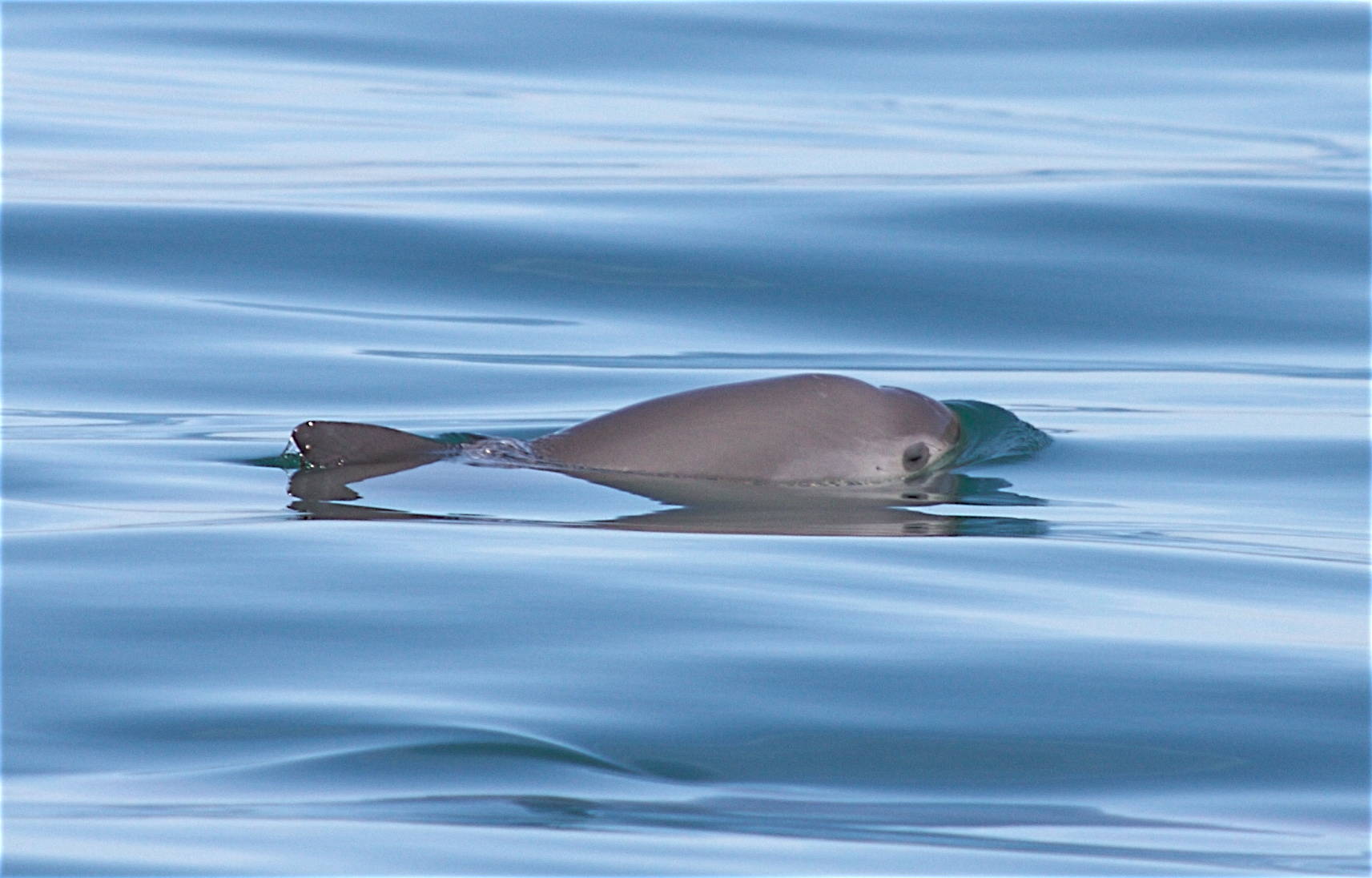Editor’s note: This story has been corrected to indicate where Emma Luck attends college. She is a student at the University of Alaska Southeast.
As the passenger pigeon, the dodo, the Steller’s sea cow and the Yangtze River porpoise, or baiji, hovered on the edge of extinction, the world blinked. Animals that numbered in the thousands disappeared. In the northern Gulf of California, a feisty little porpoise, the vaquita, could vanish not in years, but months.
On Saturday, Homer will join 36 other venues for Viva Vaquita! International Save the Vaquita Day to raise awareness of the rare species and hopefully save it.
“We’re not giving up,” said Thomas Jefferson, a San Diego, California, marine mammal biologist in a June 22 phone interview. “Essentially we need a miracle.”
The vaquita populations is now down to less than 30.
From 3-5 p.m. at the Alaska Islands and Ocean Visitor Center, Viva Vaquita will include talks by local marine biologists Debbie Boege-Tobin and Marc Webber on the rare porpoise; a discussion on the difference between porpoises and dolphins by Emma Luck, a Homer student at the University of Alaska Fairbanks; a showing of “Souls of the Vermillion Sea,” a film about the vaquita; and a panel discussion with Boege-Tobin, Webbe, and others. There also will be activities for children and parents, door prizes, and a silent auction to raise money for the vaquita.
While the focus is on the vaquita, the event also will look at conservation issues and the threat to other marine mammals, including the polar bear and the Cook Inlet beluga whale population. Even species like the sea otter, abundant in Kachemak Bay, are down in other parts of Alaska, Boege-Tobin said. Observers have noted Dall porpoises, often seen swimming along with big tour boats in Resurrection Bay, seem to be approaching those boats less, she said.
“We’re down to a miracle (with the vaquita), but we also want to convey a message about how we don’t want to go down this pathway with other species,” Webber said.
Unlike species threatened with loss of living areas, the vaquita exist in a pocket of the northern Gulf of California that’s prime habitat. If protected, Jefferson said they could probably rebound. They’ve become what he called “collateral damage” in illegal gillnet fishing for totoba, a fish whose bladder wealthy Chinese consider a delicacy and a sign of prestige. Mexican fishermen using banned gillnets can make $10,000 from one totoba bladder. Drug cartels smuggle the bladders out of Mexico to China.
“The whole thing is illegal: the capture, the species, the smuggling across the border,” Jefferson said. “When people buy it in China, it’s also illegal in China as well.”
Fishermen don’t target the vaquita, but it gets caught and drowns in gillnets. Jefferson said the species is so vulnerable that they can’t tolerate one death even every five years. In 2017, four vaquita were known the have been killed. The porpoise is so rare it didn’t become known to science until 1958. In 1997, a scientific estimate showed 570 individuals. After Mexico shut down the legal gillnet fishery in the 1970s, the totoba and then the vaquita began to recover. The vaquita doesn’t prey on the totoba, but both species benefitted from the gillnet ban. Then the Chinese discovered the totoba was similar to a fish that had gone extinct there.
“This whole situation with the totoba bladder demand in China kind of blind sided everybody,” Jefferson said. “If we could just find a way to stop that or dramatically reduce that, the vaquita could recover. It’s been impossible to do that.”
The fate of the vaquita could also be that of other less endangered, but still vulnerable species. Webber, a marine biologist who also works as deputy director of the Alaska Maritime National Wildlife Refuge, points out that while some species as a whole might survive, distinct populations like the Cook Inlet beluga whale or some Prince William Sound killer whale pods are in danger.
“We’re finding we also have to manage not only on the species level, but the genetically distinct population,” he said.
With Jefferson and Robert Pitman, Webber wrote “Marine Mammals of the World” (Academic Press, second edition, 2015), a comprehensive guide of mammals that predominantly live and feed in the oceans. That includes carnivores like the polar bear and sea otter, seals, whales, porpoises, dolphins and manatees, more than 130 species.
“We did it so people have awareness. They’re not that many marine mammals in the wrold and we’ve lost these four species,” Webber said.
Whether entire species or distinct populations within a species, Webber and Jefferson assert that biodiversity matters in its own right.
“You will have lost the genetic diversity of a population if it goes extinct,” Jefferson said.
With environmental change happening, nature can sustain itself “through the fact that biological diversity allows the raw material of species to adapt to the changes,” he said.
For more on the vaquita and Viva Vaquita events worldwide, visit http://www.vivavaquita.org.
Reach Michael Armstrong at marmstrong@homernews.com.


